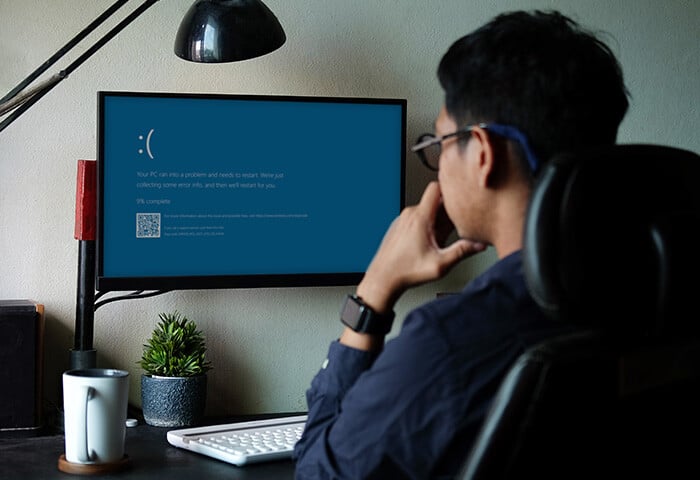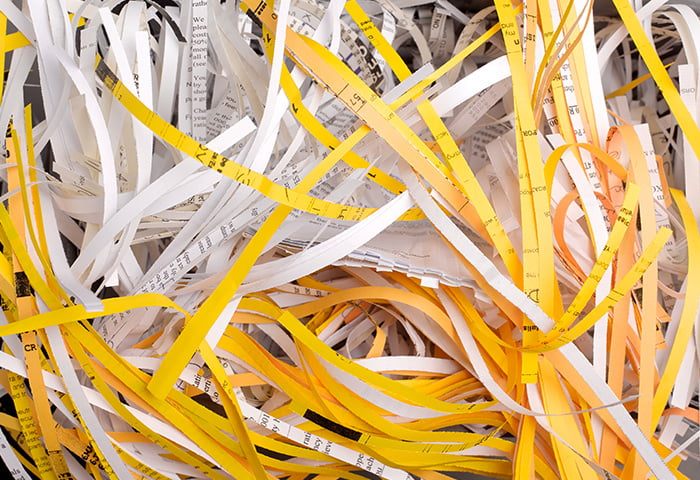How to clean up a Mac manually
With regular usage, your Mac will inevitably collect files and unnecessary apps that take up precious storage space and slow down your device. There are a number of ways to speed up your Mac, but one of the best is by cleaning up your Mac’s hard drive.
Manually performing a hard drive or disk cleanup on your Mac will free up space and leave you with a squeaky clean MacBook that runs as smooth as it looks. Here’s how to manually clean up your MacBook Pro, iMac, or any other Mac device:
Clean up files on Mac
Your Mac is a lot like a bedroom or desk — it can quickly get jumbled with things you don’t need. And just like a messy room, the best way to clean a cluttered device is to roll up your sleeves and get to work. You have to dig into folders, scroll around, and delete unnecessary files on your Mac. Here’s how to clean up files on Mac:
1. Reduce clutter
Devices with macOS Sierra and later versions have a great feature to conveniently manage files that are bogging down your hard drive. To access the Reduce Clutter feature:
-
Go to the Apple Menu and click About This Mac.
/img_01.png?width=472&name=img_01.png)
-
Click Storage to see how much free space is left on your computer. Then, click Manage.
/img_02.png?width=1304&name=img_02.png)
-
Next to the Reduce Clutter feature, click Review Files.
/img_03.png?width=1200&name=img_03.png)
-
Here, you’ll see an overview of every file in every category (Applications, Trash, Documents, and so on). Review your files and click Delete to remove files and free up space.
/img_04.png?width=2076&name=img_04.png)
Just make sure not to clean up Mac system files, which are needed for your operating system to properly function.
2. Empty the trash
Those old files you deleted a while ago are still hanging around in your Trash. Permanently delete these files to prevent them from taking up space on your Mac’s hard drive.
-
Click on the Trash icon on your Dock.
/img_05.png?width=369&name=img_05.png)
-
In the Trash window, click Empty in the top-right corner.
/img_06.png?width=835&name=img_06.png)
-
Click Empty Trash to complete the process.
3. Delete files with Smart Folder
Whether you use your Mac device for school, work or daily life, you’re bound to have old drafts and duplicates of temporary files, photos, music, and other junk files. Here’s how to clean up these files on Mac with the Smart Folder tool.
-
Open the Finder app on your Dock.
/img_07.png?width=584&name=img_07.png)
-
Click File and choose New Smart Folder.
/img_08.png?width=452&name=img_08.png)
-
Click the + button in the upper-right corner.
/img_09.png?width=835&name=img_09.png)
-
Now you can search through documents, photos, music or other file types. This strategy is most efficient when you sort the files by Name. Type in the name of old projects, or keywords where duplicates of older versions of files could be found, like “draft” or “copy.”
/img_10.png?width=835&name=img_10.png) Be sure to check the dates on the files to make sure they’re actually duplicates before deleting them.
Be sure to check the dates on the files to make sure they’re actually duplicates before deleting them.
Sifting through folders can take a while, especially if you’re doing it manually with a search bar, and there’s no guarantee that you’ll find everything. AVG TuneUp simplifies the process by automatically scanning and finding duplicate files so you can delete them in just a few clicks.
/img_11.png?width=849&name=img_11.png)
4. Delete music files
Do you have old music on your Mac that you no longer listen to? Maybe your taste in general has changed? Clean these files on your Mac to free up space for music you actually like. Similar to the point above, the best way to sort and delete music is to use the Smart Folder feature in the Finder app.
-
Sort your files by Kind > Music.
/img_12.png?width=848&name=img_12.png)
-
Scroll through your music and delete tracks. You can also browse your music collection in the Music app.
Tip: Type in the name of an artist or an album to delete files simultaneously.
/img_13.png?width=847&name=img_13.png)
5. Delete photos
It’s hard to nail a photo with the first click. Do you really need all those blurry outtakes from your friend’s birthday party three years ago? Going through individual photo files can be tedious, but the Smart Folder on the Finder App mentioned above will make it much easier.
-
Sort files by Kind > Image.
/img_14.png?width=843&name=img_14.png)
-
Change the View setting of the Smart Folder to columns.
/img_15.png?width=942&name=img_15.png)
Now you have the file names listed on the left, while the images are displayed on the right for you to review. You can look at the images as you scroll through the list and delete those you don’t need.
And for an even more efficient photo purge, AVG TuneUp can automatically streamline your photo library.
/img_16.png?width=860&name=img_16.png)
Our AI-powered photo finder can sort through your pictures, picking out poorly lit or low-contrast shots for you to delete. AVG TuneUp can also choose the best options out of similar photos (or burst mode) and help you delete the rest.
6. Delete conversations from Messages
Years of conversations with friends and family in the Messages app can take up a substantial amount of space on your hard drive. Just like using a secure and private browser is important, you should use an end-to-end encrypted messenger system for safe and secure messaging.
But even if you use an encrypted messaging app, your conversations can easily be accessed by anyone who gets hold of your device. Although you can delete individual messages and conversations, it’s a good idea to permanently delete your entire conversation history to preserve space on your drive and protect your privacy.
-
Open Messages > Preferences > Accounts and then click Sign Out.
/img_17.png?width=860&name=img_17.png)
-
Quit the Messages app.
/img_18.png?width=295&name=img_18.png)
-
From the Finder App, choose Go > Go to Folder (⌘ + Shift + G).
/img_19.png?width=621&name=img_19.png)
-
Type in or Copy/Paste ~/Library/Messages and then click Go.
/img_20.png?width=491&name=img_20.png)
-
Delete the Archive and Attachments (if you have it) folders as well as chat.db, chat.db-shm, and chat.db-wal.
/img_21.png?width=852&name=img_21.png)
-
Restart your Mac.
7. Delete iOS files
In the event of a system failure, a recent file backup is a lifesaver. While your Mac can archive files from your iPhone or other mobile Mac devices, old file backups can take up a lot of unnecessary space on your hard drive. To access and delete these unneeded backup files:
-
Choose the Apple menu and select About This Mac.
/img_22.png?width=472&name=img_22.png)
-
Go to the Storage tab and click Manage.
/img_23.png?width=1304&name=img_23.png)
-
Under Recommendations, click iOS Files.
/img_24.png?width=1200&name=img_24.png)
-
Select old iOS files and click delete.
/img_25.png?width=1200&name=img_25.png)
Clean up Mac apps
The variety of applications available for your device is constantly changing — inevitably, some apps become obsolete as newer ones become available. Deleting unneeded apps is a quick way to help clean your Mac.
Here’s how to delete old apps to clean up Mac storage space:
-
Start by opening the Finder app — under Favorites, click Applications.
/img_26.png?width=584&name=img_26.png)
-
Scroll through the list of Applications and move the ones you no longer need to the Trash.
/img_27.png?width=800&name=img_27.png)
-
Be sure to empty your Trash (as described above) to completely delete the app.
After completing this simple process to clean up your Mac drive, you should notice an immediate difference in performance.
But manually sorting through your apps and figuring out which to delete can take a lot of time. AVG TuneUp can quickly scan your Mac for apps and organize them into buckets.
/img_28.png?width=1082&name=img_28.png)
From here, you can easily select all the apps you don't want, then click Uninstall. Not only will AVG TuneUp quickly delete them, it will also detect and remove digital leftovers attached to the app that might be hiding deep in your Library folder. Once you hit Uninstall, all traces of the unwanted apps will be removed.
Clean up cached files
Cached files are data files stored by your device after you visit a website or open an application for the first time. When you revisit the site or app, your Mac will refer to these cached files to reduce loading times, rather than loading new files again from scratch.
Cached data can take up a lot of unnecessary space and ultimately slow things down rather than speed things up. If you’re tackling Mac storage cleanup, clear your cached files on Mac to free up space for more important files.
Your computer has multiple types of caches, but when cleaning your Mac, you can potentially free up the most space by clearing the User cache.
To clear your User cache, do the following:
-
Open the Finder app. Click Go > Go to Folder.
/img_29.png?width=621&name=img_29.png)
-
Type or paste ~/Library/Caches and hit Enter to go to this folder.
/img_30_corrected.png?width=491&name=img_30_corrected.png)
-
Go into each of the folders and clean out everything.
Note: To be safe, open each folder and delete the content, rather than deleting the whole folder.
-
To clean up your iMessage cache, repeat the steps above but this time enter ~/Library/Messages into the Go to Folder box.
Be sure to empty your trash after the operation to ensure the files are properly deleted. And while you’re at it, look into clearing your browser cookies as well.
Clearing your cache and cookies can go a long way toward a sleeker system, but sifting through all those folders is a hassle. AVG Tuneup is a browser, cache, and cookie cleaner that will automatically detect and delete unnecessary files, leaving you with a faster browsing experience.
How to clean up a Mac automatically
Manually cleaning up your Mac is no fun. That's why our team of expert performance engineers built an app to automatically clean and optimize your Mac for you.
AVG TuneUp automatically identifies all your unnecessary files, so you don’t have to sift through endless folders and potentially miss any of them.
/img_31.png?width=857&name=img_31.png)
AVG TuneUp will also seek out duplicate files, filter out your bad photos, and hunt down all the junk files that may be buried deep in your computer’s hard-to-reach folders.
/32.png?width=841&name=32.png)
Whether you use your Mac device for work, school, or fun, get the most out of it. AVG TuneUp ensures a thorough cleaning that will rejuvenate your Mac with more disk space and better performance.
What exactly takes up storage space on your Mac?
Some of the main culprits that take up storage space are old large files, general system junk files, old apps, bloatware, music, photos, messages and trashed items… to name a few. We covered above how to address these specific problems, but it should be noted that not all these problems apply to everyone.
Every Mac device is a bit different, depending on the person using it. Some people use their storage space for work-related files and presentations, while others edit video or create music. A great way to figure out how to clean up a Mac is to check out the Storage tab in About This Mac to see what’s taking up the most space.
-
Go to the Apple menu > About This Mac.
/img_01.png?width=472&name=img_01.png)
-
Click Storage to see exactly what types of files are taking up the most space on your Mac’s hard drive.
/img_33.png?width=664&name=img_33.png)
From here, use the Smart Folder feature mentioned above to begin your Mac cleanup process. Or use AVG Tune-Up’s bloatware remover tool to seek and destroy all those unnecessary files and apps that are taking up precious space on your Mac.
When should I clean up my Mac?
The signs that you need to clean up space on your Mac should be fairly obvious — since they will hinder your user experience and no doubt annoy you.
-
Notifications: Your Mac will notify you that your disk is almost full. This notification may keep popping up until you address the issue and clear storage on your Mac.
-
Download/update issues: A full disk drive causes a mess of problems including slow download speeds and an inability for your system to properly update, which could lead to even more performance issues down the line. Outdated software can be a major security vulnerability if the right computer exploit is discovered.
-
Slow load times: Perhaps the most frustrating sign that you have a problem is that apps and programs are running slow. All the more reason to clear storage on your Mac. And if your device’s performance is still slow, you might want to invest in upgrading your RAM.
-
Unstable programs: Are any of your apps acting funny lately? Do they suddenly close or act erratically? Remember — a clean Mac hard drive is a happy Mac hard drive.
And if you’re looking for tips to clean up and speed up your Windows device, we got you covered as well.
Clean your Mac the easy way
Getting a truly clean Mac can be time consuming — you have to really get into those digital nooks and crannies. The best way to clean your Mac is with a program specifically designed for the task.
AVG TuneUp for Mac automatically identifies and deletes junk on your Mac. It finds and removes duplicate files, blurry pictures, and long-forgotten download files. And it detects which programs you no longer need. Once you’re done, you can count on AVG TuneUp to keep your Mac as clean and efficient as ever. Give it a spin today.
/How-to-clean-up-your-Mac-Hero.jpg?width=1200&name=How-to-clean-up-your-Mac-Hero.jpg)
/img_01.png?width=472&name=img_01.png)
/img_02.png?width=1304&name=img_02.png)
/img_03.png?width=1200&name=img_03.png)
/img_04.png?width=2076&name=img_04.png)
/img_05.png?width=369&name=img_05.png)
/img_06.png?width=835&name=img_06.png)
/img_07.png?width=584&name=img_07.png)
/img_08.png?width=452&name=img_08.png)
/img_09.png?width=835&name=img_09.png)
/img_10.png?width=835&name=img_10.png) Be sure to check the dates on the files to make sure they’re actually duplicates before deleting them.
Be sure to check the dates on the files to make sure they’re actually duplicates before deleting them./img_11.png?width=849&name=img_11.png)
/img_12.png?width=848&name=img_12.png)
/img_13.png?width=847&name=img_13.png)
/img_14.png?width=843&name=img_14.png)
/img_15.png?width=942&name=img_15.png)
/img_16.png?width=860&name=img_16.png)
/img_17.png?width=860&name=img_17.png)
/img_18.png?width=295&name=img_18.png)
/img_19.png?width=621&name=img_19.png)
/img_20.png?width=491&name=img_20.png)
/img_21.png?width=852&name=img_21.png)
/img_22.png?width=472&name=img_22.png)
/img_23.png?width=1304&name=img_23.png)
/img_24.png?width=1200&name=img_24.png)
/img_25.png?width=1200&name=img_25.png)
/img_26.png?width=584&name=img_26.png)
/img_27.png?width=800&name=img_27.png)
/img_28.png?width=1082&name=img_28.png)
/img_29.png?width=621&name=img_29.png)
/img_30_corrected.png?width=491&name=img_30_corrected.png)
/img_31.png?width=857&name=img_31.png)
/32.png?width=841&name=32.png)
/img_33.png?width=664&name=img_33.png)



/AVG-How-to-clear-cache-on-your-Mac-Thumb.jpg)





%20and%20how%20to%20remove%20them%20(Signal)/Signal-What-is-a-PUP-Thumb.jpg)
/Signal-The-best-cleaning-software-for-Mac-Thumb.jpg)



